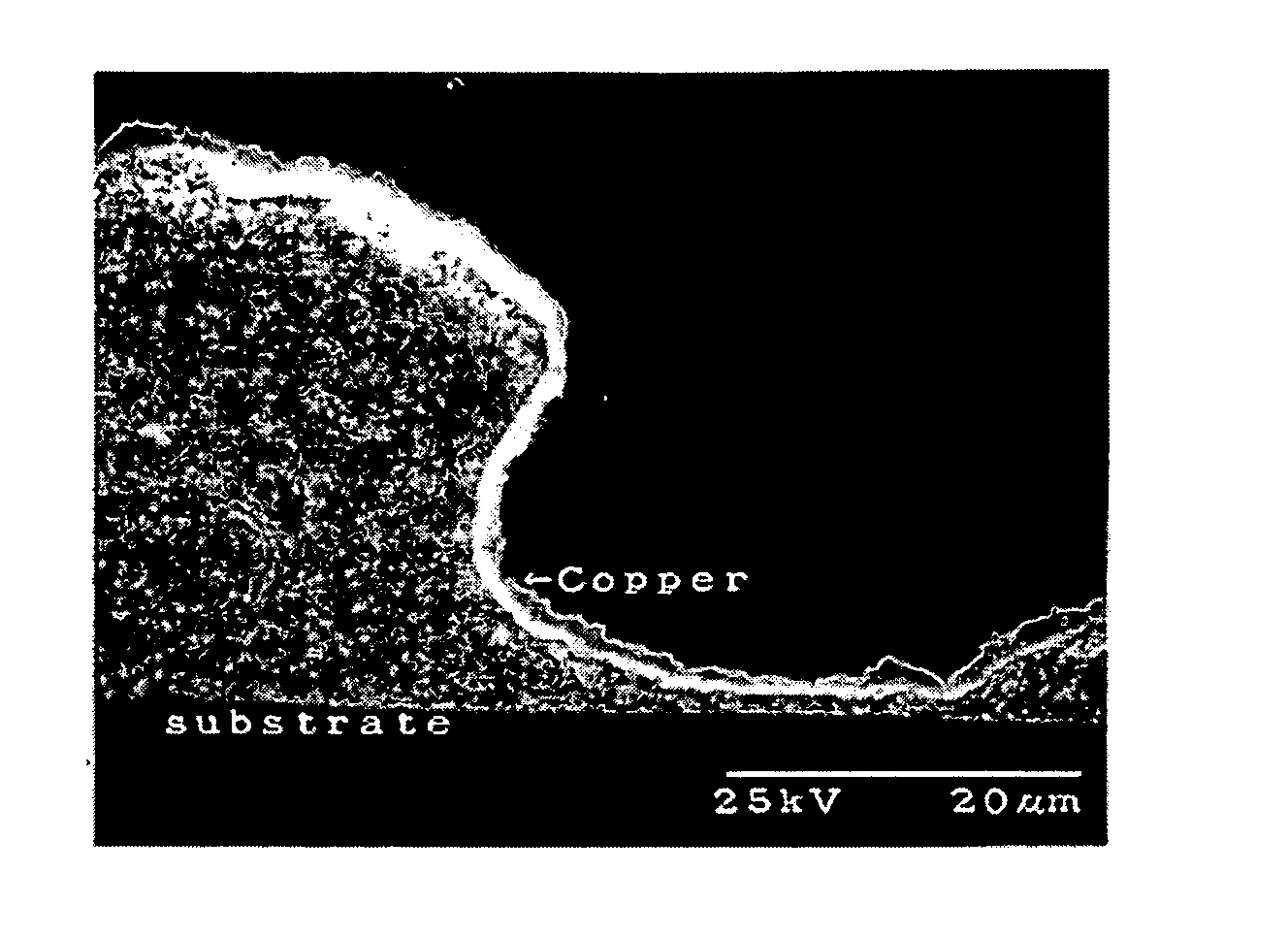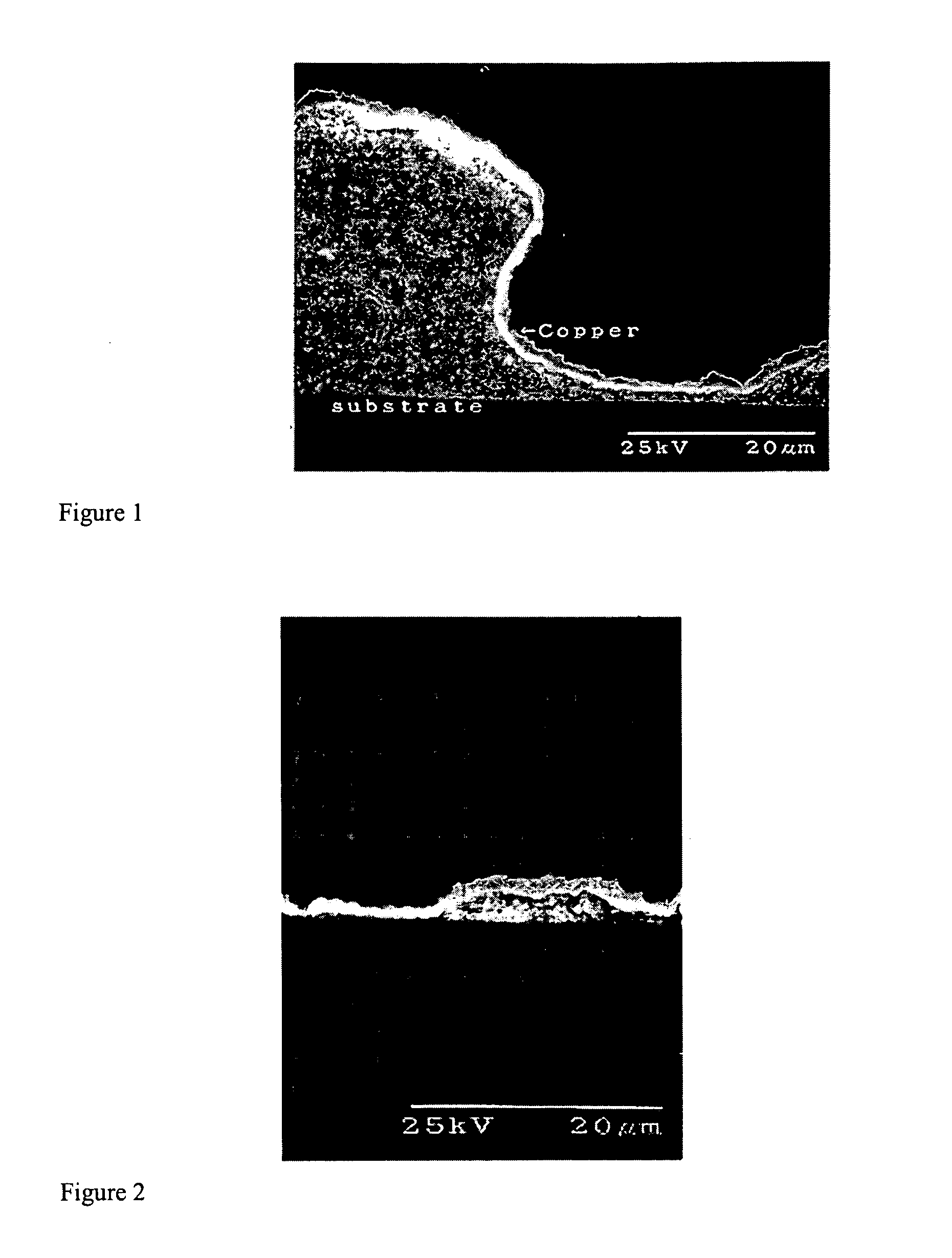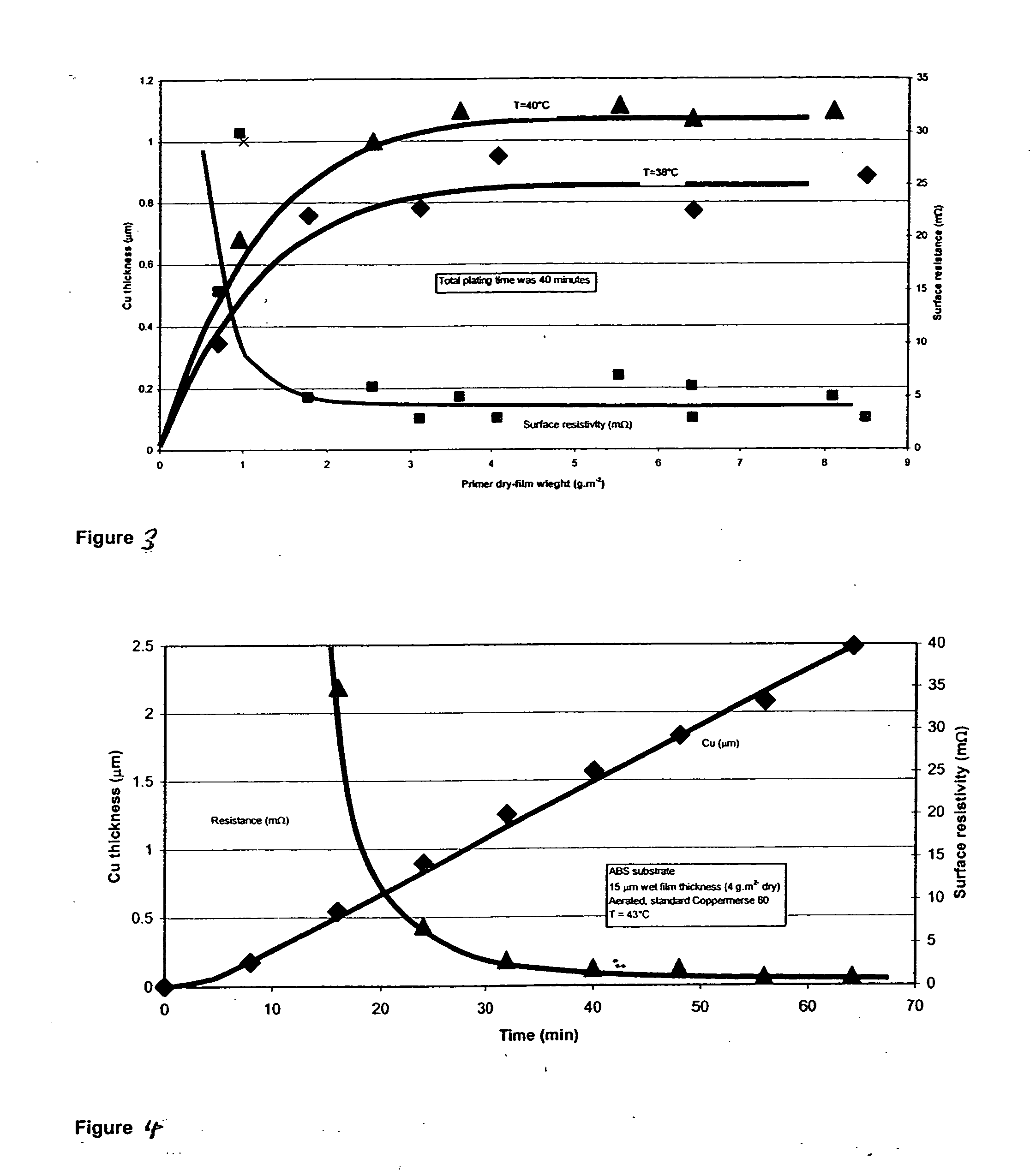Catalyst composition and deposition method
a technology of catalyst composition and deposition method, which is applied in the direction of physical/chemical process catalyst, organic compound/hydride/coordination complex catalyst, etc., can solve the problems of limited shielding effectiveness, peeling of coatings, and often difficult deposition of metal layers of uniform thickness on substrates by workers. achieve the effect of increasing the effective area of catalys
- Summary
- Abstract
- Description
- Claims
- Application Information
AI Technical Summary
Benefits of technology
Problems solved by technology
Method used
Image
Examples
example 1
A Catalytic Primer of the Invention
[0068] A stock solution of hydrated silver hydroxide was prepared by mixing 50 gm of silver nitrate (AgNO3) with 10 gm of sodium hydroxide (NaOH) at room temperature (18° C. to 20° C.), which formed a brown precipitate of hydrated silver oxide. The precipitate was allowed to settle and was then washed with a sufficient amount of deionized water to bring the pH to 9.
[0069] 0.1 gm of the hydrated silver oxide was then added to an aqueous composition containing 2.5 gm of barium sulfate (BaSO4) having an average particle size of 300 nm, 0.25 gm of iron oxide (Fe2O3) having an average particle size of 550 nm and 8.75 gm of water. The solids were dispersed in the water under high-shear agitation using a stirring apparatus. 1.2 gm of Bisphenol-A epoxy resin with an average molecular weight of 1300 equivalent weights was then added and mixed under low-shear using a stirring apparatus until a uniform slurry was formed.
[0070] A solution of 0.33 gm of an a...
example 2
A Catalytic Primer of the Invention
[0071] 0.045 gm of the stock hydrated silver oxide from Example 1 was added to an aqueous composition containing 2.5 gm of barium sulfate (BaSO4) having an average particle size of 300 nm, 0.15 gm of iron oxide (Fe2O3) having an average particle size of 550 nm, 0.5 gm di(ethylene glycol) butyl ether, and 9 gm of water. The solids were dispersed in the water using high-shear agitation. 0.8 gm of an aqueous-dispersed polyurethane resin containing hydrophobic segments in its backbone and 0.01 gm of an alkoxysilane cross-linker were added to the slurry using low-shear agitation. The ratio of inert filler to metal catalyst was 65 to 1.
example 3
A Catalytic Primer of the Invention
[0072] 0.045 gm of the stock hydrated silver oxide from Example 1 was added to an aqueous composition containing 3.6 gm of barium sulfate (BaSO4) having an average particle size of 300 nm, 0.25 gm of iron oxide (Fe2O3) having an average particle size of 550 nm, 0.5 gm di(ethylene glycol) butyl ether, and 6 gm of water. The solids were dispersed in the water using high-shear agitation. 0.8 gm of an aqueous-dispersed polyurethane resin containing hydrophobic segments in its backbone was added to the slurry using low-shear agitation. The ratio of inert filler to metal catalyst was 94 to 1.
PUM
| Property | Measurement | Unit |
|---|---|---|
| particle sizes | aaaaa | aaaaa |
| surface resistance | aaaaa | aaaaa |
| thickness | aaaaa | aaaaa |
Abstract
Description
Claims
Application Information
 Login to View More
Login to View More - R&D
- Intellectual Property
- Life Sciences
- Materials
- Tech Scout
- Unparalleled Data Quality
- Higher Quality Content
- 60% Fewer Hallucinations
Browse by: Latest US Patents, China's latest patents, Technical Efficacy Thesaurus, Application Domain, Technology Topic, Popular Technical Reports.
© 2025 PatSnap. All rights reserved.Legal|Privacy policy|Modern Slavery Act Transparency Statement|Sitemap|About US| Contact US: help@patsnap.com



